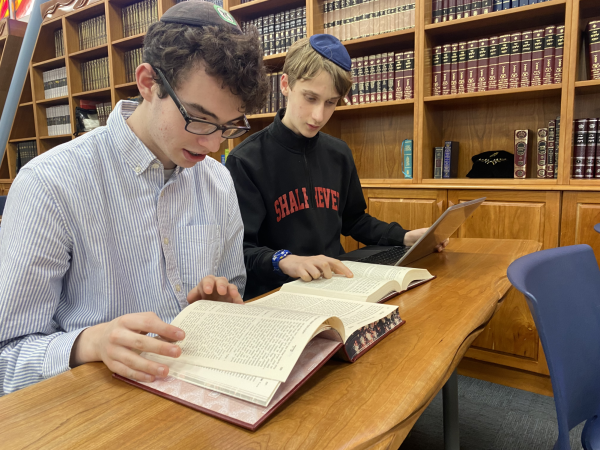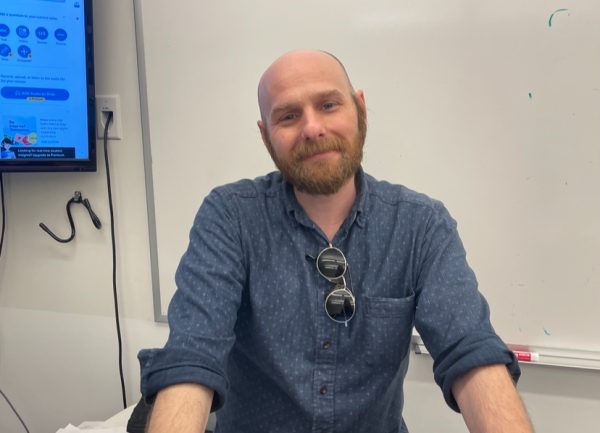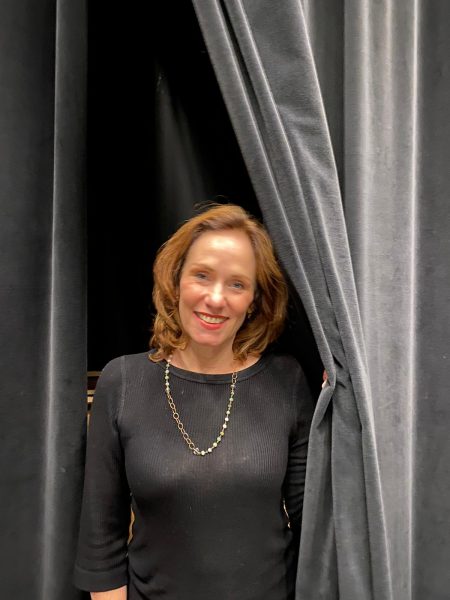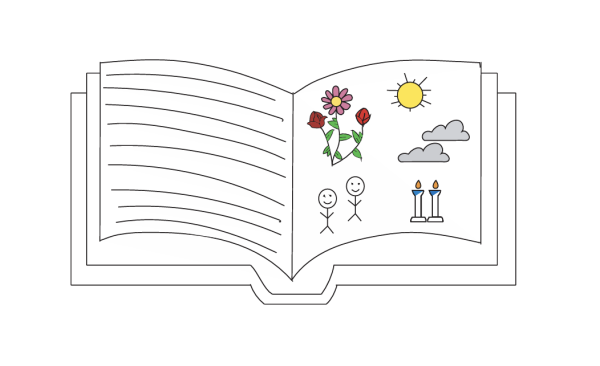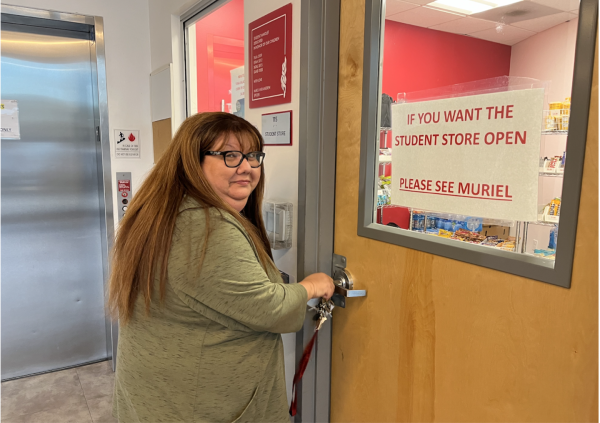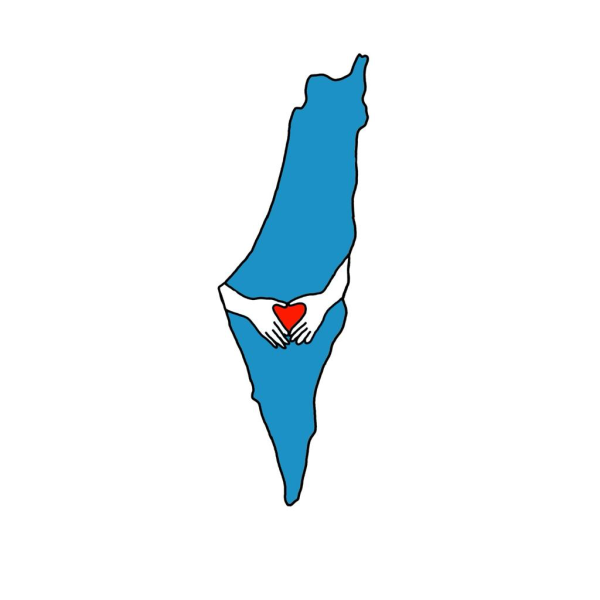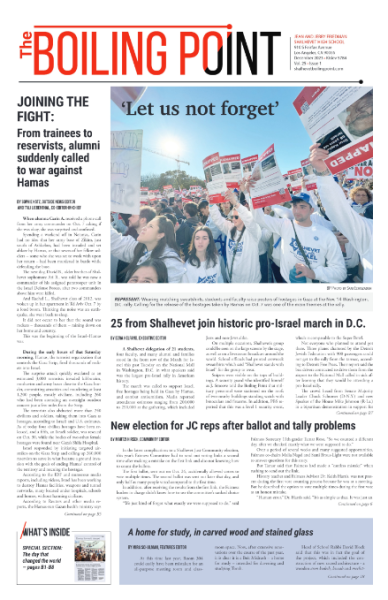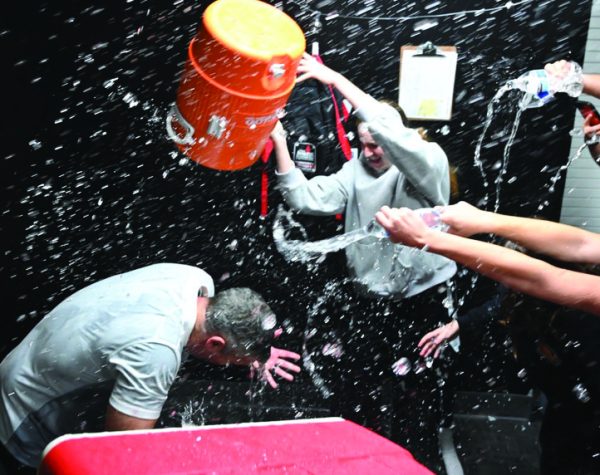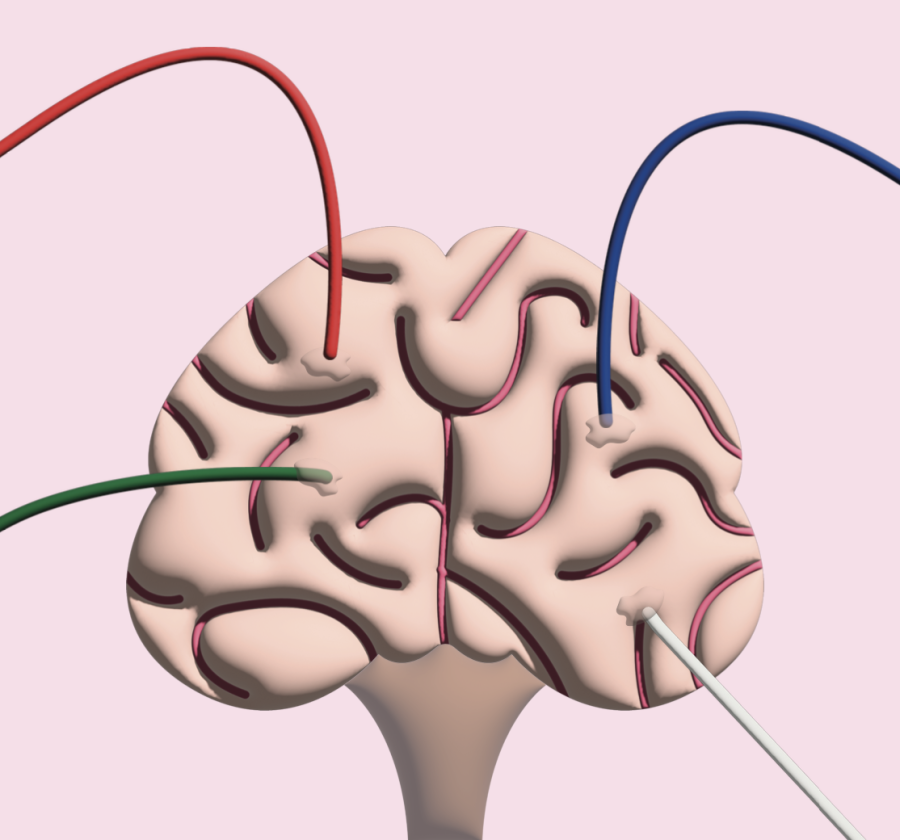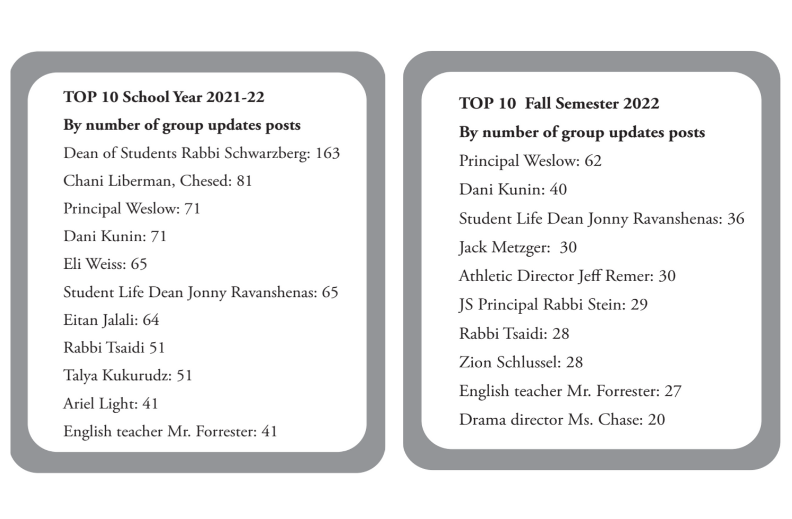Shalhevet girls have always had a flair for eye-catching color, and lately, it affects even their hair. In recent weeks, girls from all grades and even some faculty can be seen strutting through the hallways with flowing pink, blue, or red strands cascading behind.
“I think it looks cool and different,” comments sophomore Jennifer Pajounia on her magenta- streaked locks. “Why blend in?”
Senior Talia Reich, self-proclaimed “trailblazer” of the hair-dying highway, says once she tried it in the 10th grade, it was impossible to stop.
“Hair dyeing is an addiction,” says Talia. “I’ve done blue, pink, purple, and an assortment of other colors.”
As they do with shoes, clothes, or makeup, the girls are using hair color to express themselves—to be recognized as individuals. At last count, 10 girls are currently opting for hair color experimentation.
As that number continues to rise, what began as self-expression is quickly becoming a trend. Many girls who had intended on experimenting with dyeing have decided not to—ironically, to avoid becoming mainstream.
“I dyed my hair red with black underneath because I thought it looked very unique,” says freshman Bailey Bieda, “but it’s not, now that so many others have dyed their hair red.”
Senior Bracha Stettin, who joined the color craze last April, agrees and offers some words of wisdom to potential dyers.
“Dyeing your hair when no one else does makes you unique,” Bracha said, “but when everyone else does it you have to find another way to be unique. I suggest staying true to yourself.”
Bracha first tried a reddish “cinnaberry” color, and now has bleached streaks she uses to experiment with various colors.
Students do not trek to the salon every few months; most have opted for the more frugal approach and dye their own hair with drugstore kits and ingredients ranging in price from $5 to $20. Two juniors in particular are getting creative with the homegrown process.
“I heard that you can dye your hair with Kool-Aid, and it was something I’ve always wanted to try,” says junior Keren Meir, who tried it with her classmate Arielle Miro. “Arielle and I just followed the directions on Youtube, and it worked! It was so exciting.”
That particular dye washes out after several shampoos, and leaves hair smelling like Kool-Aid, so it is a commitment-free, sweet-scented way to add some color. Since it uses punch instead of chemicals, its ammonia-and-peroxide-free formula is great for pregnant woman or girls with allergies.
Meanwhile, the administration has shown nothing but approval for the vivid self-expression.
“Personally, as someone who had pretty crazy hair in high school and who has dyed his hair every color of the rainbow, I have no problems with hair coloring,” says Mr. Phu Tranchi, Principal of General Studies. “I actually enjoy the fact that kids can do this now and not be ostracized like I used to be.”
Several of these daring individuals seem to be having second thoughts about their semi-permanent experiments, however. While drugstore products like “Color Oops Hair Color Remover” advertises the capability to reverse color-gone-wrong, it admittedly only works on hair that has been dyed darker then the original color—not bleached.
“I wish I had never touched my hair to begin with,” says Keren, who has gone from light brown to blonde to reddish Kool-Aid. “I miss my natural color!”
The male population of Shalhevet has responded with a varying array of reactions to the craze. Emotions range from contempt to admiration, with the undecided residing in shades of gray.
“Girls should be showing their natural hair instead of replacing it with artificial colors,” says sophomore David Fletcher. “They’re hiding their natural beauty.”
On the other side lie students who assert that the decision should be left to the girl.
“It looks nice,” contends junior Michael Zana. “If you want to, why not?”
Then there are those who look at the fad on a case-by-case basis, such as sophomore Yossi Halpert.
“I’m not like 100 percent for it or 100 percent against it,” says Halpert.” I think natural is better, but sometimes dyeing works out good.”


